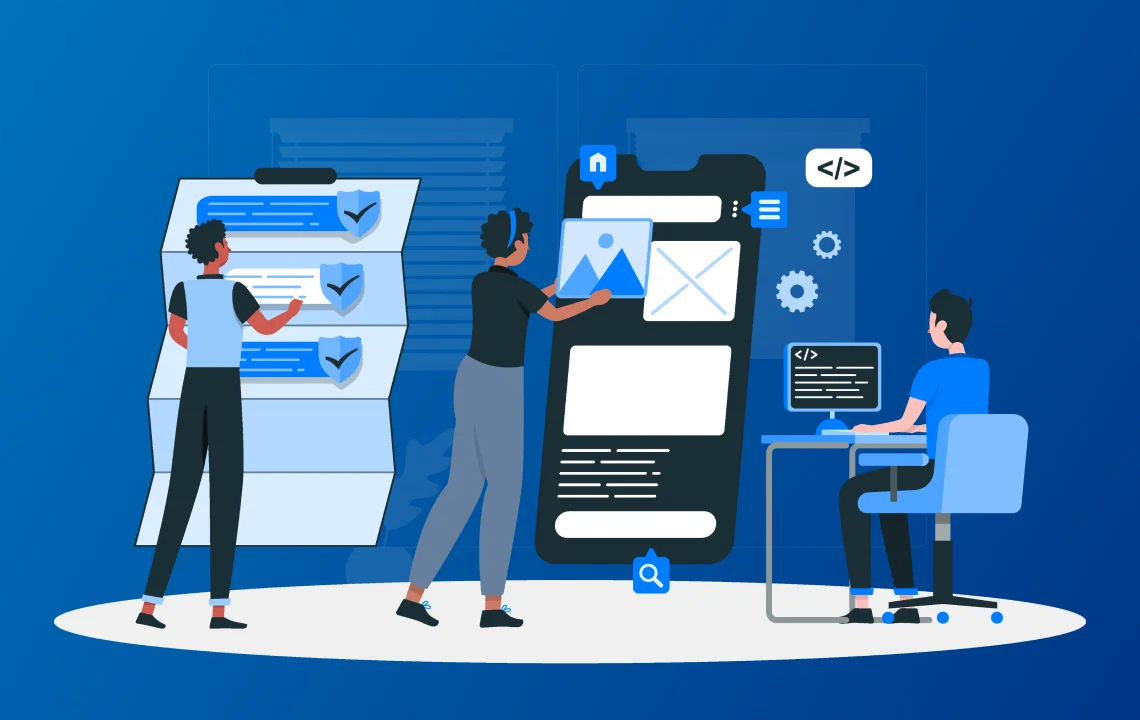Mobile app development has always been a complex ordeal, but choosing the right app development methodology can make a significant difference. But before choosing the right methodology, you need to understand the Software Development Life Cycle (SDLC), the process of developing, designing, and testing software. This process helps developers create the ideal software application ensuring it meets all demands and expectations of the client.
The Agile and Waterfall methodologies are two of the most popular methodologies and SDLC models developers use today. But comparing and choosing the right of these two methodologies is not always easy. So let’s dive into the details and help you choose the right software development approach.
But First, What Is The Waterfall App Development Methodology?
The Waterfall app development methodology is a time-tested tactic where the app development project is divided into multiple phases. These phases start with initiation, followed by analysis, design, development, testing, and ending with deployment.
One of the most defining characteristics of the Waterfall app development methodology is that you cannot move on to the next phase without completing the first. This sequential approach ensures that there is no overlapping of phases involved in the app development methodology.
Are There Any Advantages Of The Waterfall App Development Methodology?
There are many advantages of the Waterfall app development methodology, but the best-known ones include the following:
- Seamless comprehension and implementation is one of the best-known advantages of the Waterfall app development methodology.
- The sequential nature of the Waterfall app development methodology allows one to identify deliverables and ensure easy management of the model’s rigidity.
- The Waterfall app development methodology makes it much easier to understand a project’s timeline and development cost.
What Is The Agile App Development Methodology?
The Agile app development methodology takes a relatively different and speedy approach to mobile app development. This app development methodology uses an efficient team-based approach to help developers create a Minimum Viable Product (MVP).
As a result, it becomes much easier for developers to integrate needed iterations throughout the developing phase and create the ideal mobile app for their clients. The Agile app development methodology focuses on a parallel approach while ensuring developers can keep track of every feature and functionality of the mobile app.
What Are The Advantages Of The Agile App Development Methodology?
Just as the case with the Waterfall app development methodology, there are many advantages of the Agile app development methodology as well. These advantages include the following:
- The Agile app development methodology allows developers to test at every phase, ensuring one can find and fix all bugs as soon as possible.
- This methodology ensures enhanced teamwork and frequent communication making it easier to maintain an effective workflow with a result-oriented approach.
- The Agile app development methodology creates shorter app development cycles, giving developers far more flexibility to make iterations at any point in the development cycle.
Bottom Line: Which App Development Methodology Should You Choose?
Both the Waterfall and Agile app development methodologies are ideal based on the project’s specific requirements. Hence, the best way forward is to evaluate your requirements and decide accordingly. This means looking at when the Agile app development methodology looks better than the Waterfall app development methodology and choosing the right one accordingly.
